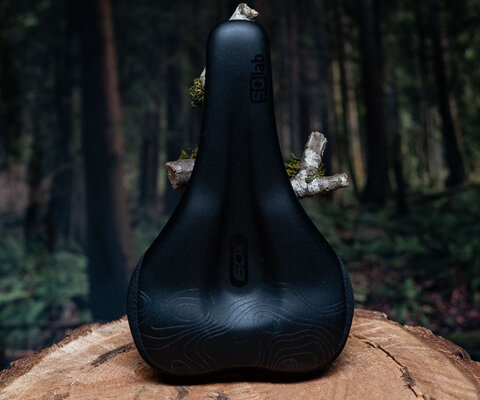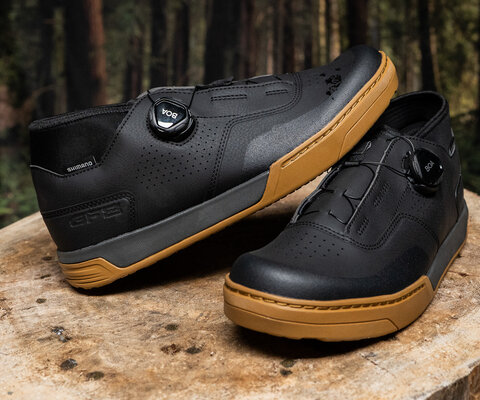
Care For Your Trails It Takes a Village
Words by Brice Minnigh | Photos by Victor Brousseaud
Words by Brice Minnigh / Illustration by Victor Brousseaud
We’ve all been there: Out for a quick lunchtime rip, roosting the tops off our favorite series of berms, then suddenly blasting past a trail crew
that’s been busy packing in those very berms. In a rush to get back to the office, we’ve slowed down for only a few seconds to utter a sheepish “thanks for the awesome work, guys” before blazing on down the trail.
Wracked with guilt and an overwhelming sense of shame for being “that guy,” the only chance for redemption was to attend the next major trail day, bringing extra beverages for the volunteers and making a public apology for the embarrassing breach of mountain biking protocol. Newly forgiven and with reputation restored, how good did it feel to put in some sweat equity with that shovel?
That feeling of satisfaction, and the deeper connection it provides us with our trails, might be more important now than it ever has been. With last year’s COVID-19 lockdowns leading to an unprecedented surge in outdoor recreation, trails around the world have seen record numbers of users, from hikers to runners and more mountain bikers than we’ve seen before in our lifetimes. With such a dramatic increase in users, many of our finest trails have become more blown out than ever before—a phenomenon that will require substantially more trailbuilding and maintenance to keep pace with skyrocketing traffic levels.
While we at Freehub love seeing our sport grow and enter the mainstream, it’s easy to see how crucial it will be to bolster our ranks of trail custodians in tandem with this unexpected explosion of new riders. One way to do this could be through outreach, both formal and informal. Inviting someone you meet on the trail to a maintenance day could not only lead to a new volunteer, but also another friend and potential member of your local advocacy group. Once that rider experiences the joy of improving a trail—and establishing a connection to the dirt and rocks they ride—it will strengthen their commitment to stewardship and the vibrant culture of mountain biking as a whole.
Our existing advocacy groups are better organized than ever, with dedicated staff to oversee planning, raise funds, liaise with public and private land managers and spread the word about maintenance initiatives. Using the power of the internet and social media can help raise aware- ness of the importance of stewardship while also attracting new volunteers. There is strength in numbers, and the larger our sport’s organizations grow, the greater the influence we’ll have in community decision-making when it comes to outdoor recreation.
With this influence comes heightened responsibility, and ongoing education efforts will help ensure that we retain the trust of community leaders and our goodwill with other user groups. Teaching new riders about the basics of trail etiquette is essential to preserving the mutual respect between mountain bikers and hikers, runners and equestrians. We’ve strived too hard to improve long-strained relationships with other users to have them jeopardized by newcomers and even experienced riders who don’t know to slow down when passing others, or the time-honored rule that the climber has right of way over the descender on two-way trails. It’s up to us to share this knowledge with riders as we welcome them into the fold.
TEACHING NEW RIDERS ABOUT THE BASICS OF TRAIL ETIQUETTE IS ESSENTIAL TO PRESERVING THE MUTUAL RESPECT BETWEEN MOUNTAIN BIKERS AND HIKERS, RUNNERS AND EQUESTRIANS.
Though it’s true that mountain biking has its roots in rogue trailbuilding, in most parts of North America it simply doesn’t make sense to build unauthorized or illegal singletrack when we now have many effective channels for getting new trail projects officially approved—and sometimes even funded. As tempting as it might be to cut a sweet new connector line without authorization, consider the damage this causes to ongoing land use negotiations and our reputation among the broader community. It might take some time to get the official sign-off for a new trail, but once it’s been approved it is likely to be around for a long time, and you’ll probably end up getting a lot more help building it.
Working in advocacy is not for everyone, and effective trail advocates usually possess a unique skill mix of patience, persuasion, diplomacy and the subtle art of compromise. Even if this isn’t your cup of tea, your local advocacy group still needs your input and support. Attending land-use meetings and providing constructive feedback helps ensure that a variety of viewpoints are considered, and a sizeable turnout of mountain bikers at any public planning session always sends a message of strength and solidarity.
Building and maintaining trails can be heaps of fun, whether you’re digging alone after a fresh rain or alongside dozens of volunteers on a weekend improvement project. Being outside and working in the elements with your hands is self-affirming and, at times, even therapeutic. Co-operating with others can instill a sense of harmony and connection that has been sorely lacking during a year of pandemic-induced isolation, and it’s always amazing to see just how much can be accomplished in a single day by a dozen hardworking volunteers. And few things top the gratification of finally bringing a new line to fruition—except maybe reaping the rewards of your labor by riding it.
For more on Trail Etiquette check out the other stories in the series.
For more on Trail Etiquette check out the other stories in the series.
For more on Trail Etiquette check out the other stories in the series.


